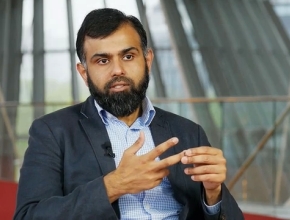Can we talk about postinfectious cough? What are the diagnostic criteria and available treatment options?
Imran Satia: One of the important things to understand is that if somebody is having an infection or a recurrent infection, it is important to make sure that this patient has not developed or has developed bronchiectasis, which is a clinical and radiological disease where infection and mucus plugging is a major problem. In these situations it is of benefit that patients cough.
It is important to understand the etiology of the cough. If the cause of the cough is bronchiectasis, then it is important that the treatment algorithm is directed towards clearing the lungs. That includes physiotherapy; intravenous, oral, or nebulized antibiotics; intensive hypertonic saline to thin the mucus; and using mucolytics to try and thin the mucus, to try and get rid of the mucus from the lungs. These are strategies which are used in patients with bronchiectasis.
It is important to clarify whether cough is of infectious or noninfectious origin. If it is of infectious origin, then it is important not to suppress the cough because that might be harmful to the patient.
 English
English
 Español
Español
 українська
українська









